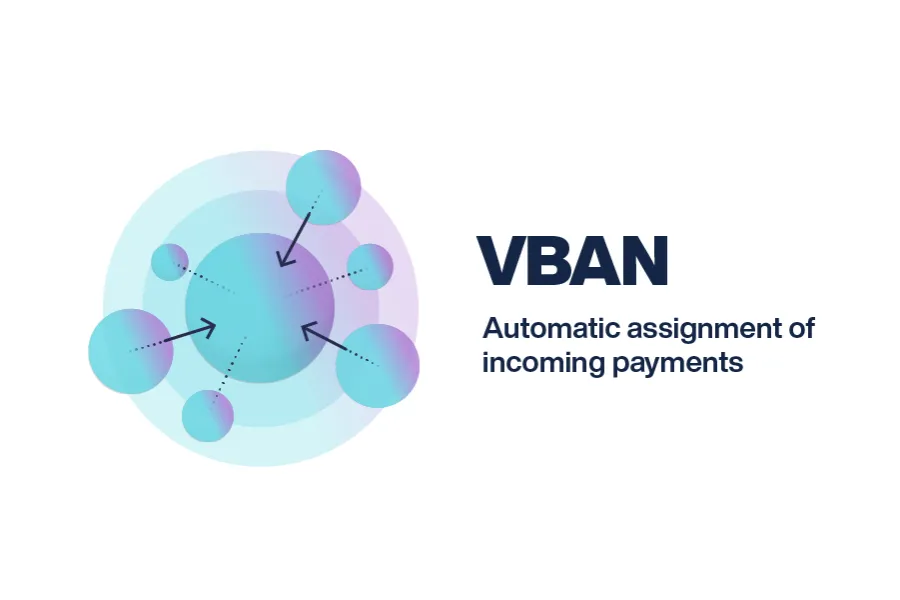Private debt – more capital market, less bank
Even in times of low interest rates, investors look for ways to diversify their portfolios in the hope of achieving attractive returns. This is a situation which Bank Frick – with its focus on intermediaries – also has to address. At the same time, SMEs are increasingly having problems with financing due to their valuation risks and the stricter regulation of banks under the Basel III reform package, and are therefore turning their backs on classic credit institutions. A potential solution for both sides is private debt, which is becoming an interesting form of investment for asset managers and their clients thanks to digitalisation.
The private debt asset class includes loans that are not issued in the classic manner by banks but by non-banks, such as funds, family offices, insurers and pension funds – which is why the term “private placements” is sometimes used as well.
Private debt is becoming more and more popular as a form of financing and could soon become an established asset class with both intermediaries and asset managers alike thanks to digitalisation and the standardisation of processes, as well as the associated increase of the level of transparency. This is reason enough to take a closer look at the products – after all, they offer plenty of incentives, including the promise of more attractive returns than conventional bonds, lower price fluctuations and good opportunities for portfolio diversification. As a result, private debt is likely to be more than just a short-term fad.
From risk-free return to return-free risk
Given the low-interest-rate environment that has now prevailed for more than 10 years, local asset managers have grown accustomed to confronting the “investment crisis” on a daily basis. To date, no change is in sight. As a consequence, good old government bonds – once thought of as a “risk-free return” – have turned into a “return-free risk”.
In general, the only established alternatives to the aforementioned fixed-interest securities are equities, precious metals and structured products. A cool-down on the equity markets has been expected for some time, however, and will occur at the latest when interest rates are raised. Furthermore, asset managers only use precious metals in small amounts for portfolio diversification purposes – to protect against inflation and preserve value.
In the race for returns, structured products have therefore experienced unprecedented demand in recent years. However, although interesting investment strategies can be pursued and the products can be adapted individually by client type and risk category – in some cases quickly and entirely by digital means – one catch is often ignored. This is that together with the strategy replicated in the structured product, the investor also buys the issuer risk. Alongside the banks, the issuers are those market participants which were knocked off course by the 2008 financial crisis, and sometimes can only stay afloat with the help of cheap capital or state guarantees.
If a liquidity crisis were to occur again, this would have far-reaching consequences for these asset classes. And such a scenario appears likely, given the exploding real estate prices and the increasing levels of debt in the emerging markets, which are saddled with ever higher volumes of outstanding foreign-currency loans. Against this backdrop, the national banks will not shy away from using their most important monetary-policy instrument, but will raise interest rates sooner or later in an effort to pre-empt a crisis of this nature. For that reason, family offices, asset managers and other intermediaries should start considering alternatives at an early stage, to ensure that they can exploit the capital market’s full potential.
Liquidity is there, but it often goes to the wrong place
Whereas in the past, low interest rates in principle offered a good opportunity to borrow cheaply and then offset the capital costs with the return from the loan, this simple formula no longer applies today, especially for SMEs.
Although interest arbitrage remains a key pillar of the banking world, credit institutions are increasingly giving preference to borrowers with sufficient and, above all, easily valued collateral in order to minimise the probability of default. As a result, start-ups and SMEs that have already pledged a company building, for example, often lose out to home-builders, who can provide a promising property secured by mortgage as collateral.
The ever stricter requirements in terms of banks’ minimum reserves are further intensifying the situation. As part of Basel III, banks were required after the 2007 financial crisis to back loans with more equity capital depending on the risk, and Basel IV will further expand these measures. This has resulted in a more restrictive lending policy, to the detriment primarily of smaller, unlisted companies without an investment grade rating.
Private debt as a new asset class
Increasingly, the only option that remains for them is to look for sources of financing outside the banking world. Many well-managed companies are willing to pay their investors risk-appropriate interest rates. There is also a risk premium, which is included due to the lack of liquidity and the increased complexity of the investments. As a result, private debt generally offers impressively attractive returns. In addition, this form of investment provides interesting opportunities for diversification – the correlation with other asset classes is low – and is subject to very little price fluctuations due to the absence of a secondary market and because the psychological factor has a relatively minor effect. The design of private debt products is not standardised, but unlike private equity they always involve borrowed capital – private debt is a means not least by which investors can support small and medium-sized enterprises with a flexible financing product.
Private debt has long since been discovered as an asset class, but in the past the lack of transparency meant that it was primarily the preserve of institutional market participants. In addition to the non-public character of such products, the issuers usually are subject to relatively few publication obligations and often have no rating. What is more, there are no standardised trading venues, and investors must be able to live with a lack of liquidity.
In the age of MiFID II and FIDLEG, it made sense for asset managers to keep their clients away from such investments as it was very difficult to match and document the risk profiles of the clients and the investments.
Digitalisation creates transparency
The gap between private debt, intermediaries and their end clients has now been bridged by means of digitalisation and the standardisation of processes, as well as the associated transparency for all parties involved. The objective and the central instrument is the area2Invest online platform provided by 21.finance AG, a company in which Bank Frick purchased a stake of just over 25% as part of a capital increase.
Onboarding by the issuer, which comprises the creation and listing of a new product on a website, classic investor onboarding processes such as KYC and AML, MiFID classification and finally order placement have all been digitised. Extensive information about the issuer is obtained and made available on a platform, meaning that the standards governing exchange-traded products now apply to the private debt asset class as well.
Issuers get a new distribution channel and benefit from a greater reach, and investors and intermediaries can estimate the risk profile far more accurately using the key figures requested and contact the issuer directly, which ensures transparency.
The legal requirements for investor categorisation and the obligations of banks and asset managers under MiFID II may be relatively clear in theory, but in practice they continue to cause uncertainty as client data is still recorded manually in most cases and follow-up documentation only occurs at irregular, long intervals – as a result, the liability risk for banks and intermediaries increases accordingly. Here, too, digitised and standardised processes can provide relief and security. At the same time, business processes – executing subscriptions, exchanging information between the investor and the issuer, etc. – can be automated and documented in an audit-proof manner, enabling the issuer to prove at a later date that the proper distribution procedures were followed.
The situation is the same for companies seeking capital. If investors can rely on a minimum standard of key product and company figures in future, this will not only facilitate – and accelerate – their decision-making process but will make it easy to match the client risk profile with the product.
Against this backdrop, the idea of “More capital market, less bank” works thanks to digitalisation and a platform that automatically aligns client demand with supply and presents them to users on an individual basis. A bank is no longer required in this scenario, and yet clients do not have to do without the depiction of the investment in their bank custody account. Another result of the elimination of banks is that it resolves the conflicts of interest which have hitherto affected order placements. The capital market is therefore nurtured in the way that the EU is clearly striving to achieve with its reform of the Prospectus Directive.
This is good news for both asset managers and issuers alike, and the onus is on them to take advantage of it both in the current environment of persistently low interest rates and beyond. Intermediaries are likely to be interested not only in the potential to maximise returns but also in the opportunity to achieve portfolio diversification in connection with low costs.
Share post

Related Posts

Future Career Day between the vault, trading and crypto
Yesterday, 20 school pupils spent Future Career Day at Bank Frick. While precious metals can still be found in the vault, the peek behind the scenes of banking in 2025 reveals how safe-busters are becoming crypto-crackers.

Bank Frick is playing in the Champions League with its offering for its employees
In Space 4U, Bank Frick has created a place where employees can come together across departments, try out new things and inspire one another. Be it exercise, creativity or shared experiences: the offering is diverse and actively shaped by employees. A multifunctional room offers contemporary training facilities and space for creative exchange. Experts agree: this makes Bank Frick a pioneer throughout Switzerland and Liechtenstein.

Bank Frick extends its sponsorship of the LieMudRun by five years
Almost all tickets for this year’s LieMudRun were already sold out. Due to the continued high demand and great popularity of the obstacle run, Bank Frick is extending its sponsorship for another five years.

Bank Frick wins two Gold Dolphins in Cannes
Bank Frick bags two awards at the Cannes Corporate Media & TV Awards 2025 with its “Doing things differently” corporate film.

Bank Frick simplifies payments with VBAN service
Bank Frick is launching a virtual IBAN service that enables the automated allocation of payments: virtual IBANs (vIBANs) clearly link end clients with incoming payments. This offers several advantages, especially for companies with a digital focus.

Bank Frick generates net profit of 4.5 million francs
Bank Frick generated a net profit of 4.5 million francs in the first half of 2025. It is thus achieving its budget targets and generating stable income in a difficult market environment. This performance confirms that the Bank is on the right track: Bank Frick is still forecasting an annual profit of 9 million francs.

How blockchain is changing humanitarian aid
Transferring money to smartphones, making donations with cryptocurrencies and tracking aid supplies in real time. How humanitarian aid reaches those in need is changing fundamentally. Behind it all is blockchain technology, generating progress by reducing administrative costs and increasing transparency.

Bank-Frick Scholarship awarded at the University of Liechtenstein
Bank Frick is once again awarding a scholarship for participation in the CAS Blockchain and Fintech at the University of Liechtenstein. This year, the scholarship goes to Sabrina Zimmermann from Bad Ragaz. Out of eight applicants, she was chosen to take part in the programme free of charge.

Bank Frick expands its digital trading offering with sponsored access on RULEMATCH
Bank Frick is expanding its offering in the area of digital trading, offering institutional clients exclusive sponsored access to RULEMATCH, one of the world’s fastest trading platforms for cryptocurrencies.

Talk with CEO Edi Wögerer on SRF 1 and TVSO
25 years at Bank Frick: Edi Wögerer looks back at his career in an interview with “Südostschweiz Standpunkte”. SRF broadcast the talk for the first time on 1 June.